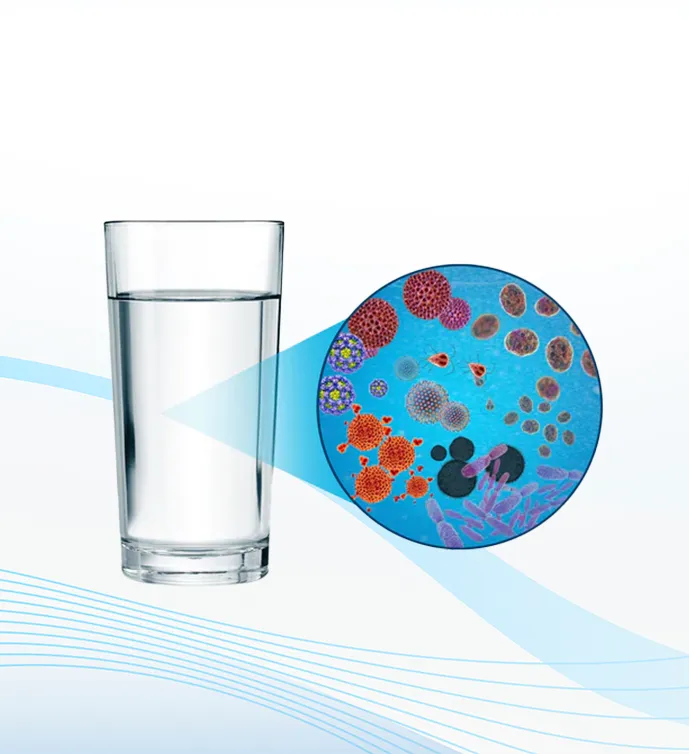
Common life threatening Contaminates found in MOST Tap Water.
Arsenic is a naturally occurring mineral that causes bladder, lung and skin cancer as well as harm to the skin and lungs. Arsenic is found in drinking water in all 50 states.
In 2001, the Environmental Protection Agency set a legal limit for arsenic in drinking water of 10 parts per billion. But the EPA’s analysis showed that this limit was not low enough to protect public health, potentially causing up to 600 cancer cases in 1 million people who drink water with arsenic.
How does arsenic get into drinking water? Arsenic in drinking water comes from natural, industrial and agricultural sources. It leaches from rocks into groundwater that might be used for drinking or irrigation. Mining waste, metal production, coal power plants and burning of other fossil fuels are additional sources of arsenic pollution.
Arsenic was intentionally added to poultry feed until the Food and Drug Administration banned this practice in 2013. Arsenic was also formerly used as a lumber preservative, which has contaminated the soil in many residential areas.
Both the EPA and the World Health Organization have determined that arsenic is a “known human carcinogen,” based on indisputable evidence that arsenic exposures increase the risk of bladder, lung and skin cancer. Other evidence suggests it can cause liver, kidney and prostate cancers. Arsenic can also cause skin lesions, harm to the kidneys and other internal organs, and cardiovascular disease. Some studies have found lung cancer risks associated with drinking water exposures.
What can be done to reduce public exposure to arsenic?
Besides the agreement that the EPA must lower the legal limit for arsenic in drinking water, work with water utilities to filter out arsenic and help inform people who drink well water with arsenic.
Having a whole home filtration system with added Katalox Light® filter media is a promising way to lower not only arsenic, but radium, and uranium as well. Katalox Light® is also an effective way to lower other heavy metals like mercury.
Disinfection byproducts- AKA trihalomethanes increases the risk of bladder cancer. Disinfection byproducts also increase the risk of problems during pregnancy, including miscarriage, cardiovascular defects, neural tube defects and low birth weight.
Chlorite and chlorate are two structurally similar disinfection byproducts that form when chlorine dioxide, also known as chlorine gas, or hypochlorite, the active ingredient in bleach, is used as a disinfectant.
Scientists reported that chlorite affects sperm and thyroid function and causes stomach ulcers. It may alter the behavior and neurodevelopment of rat pups exposed in the womb.
Like chlorite, chlorate damages red blood cells and can affect thyroid function. Chlorate harms the thyroid by decreasing iodide uptake, which leads to enlargement of the thyroid, a condition known as a goiter, and thyroid disease.
What should be done to decrease the levels of disinfection byproducts?
Water utilities should work with nearby farms to reduce the fertilizer, nitrogen and animal waste entering drinking water sources. Urban runoff and human waste can be limited with proper storm water and wastewater treatment.
What can I do to remove disinfection byproducts from my tap water?
We recommend using our Elite home filtration system to treat disinfection byproducts in your tap water our NSF Certified acid-washed media found in our Elite System removes chlorine, gases, heavy metals, odors, tastes, dyes, fuels, pollutants, disinfectants, pesticides, TTHM, sodium chloride, and volatile organic contaminants (VOC).
Manganese-is a naturally occurring mineral found in food, drinking water and soil. In small amounts, manganese is necessary for good health, but in excess, it can harm infants and children.
There is growing scientific evidence that manganese exposures during pregnancy and childhood can impair learning, memory and behavior in children.
The federal government has not set a legal limit for manganese in drinking water. Instead, it has a non-enforceable guideline that encourages water companies to keep manganese levels below 50 parts per billion, or ppb.
According the EPA over 5 million Americans drink water from public systems with manganese above this level.
In 2009 the U.S. Geological Survey reported that one in six drinking water samples in a large study of private wells exceeded 300 ppb of manganese.
The primary targets of manganese are the brain and nervous system.
Manganese poses more serious concerns for children.
A growing number of studies report associations between manganese exposure and hyperactivity, poorer IQ scores, and memory and attention problems in children.
Reviewed studies with children reported that 12 of 14 studies found manganese was associated with poorer intelligence and mental development. Seven studies found a significant relationship between manganese exposure and behavioral problems. Children also absorb and retain more manganese than adults.
What should be done to address the risks of manganese exposure?
There are important unresolved issues about the safety of low doses of manganese ingestion for children. Studies suggest that manganese in drinking water may be more harmful than manganese in food. The EPA set an enforceable national standard that caps exposure at levels that are safe for formula-fed babies, the group at greatest risk from the chemical.
Children, elderly and pregnant women are at higher risk of manganese toxic exposure.

What is PFAS and why you need to know about them?
Get the inside scoop on PFAS from Robert Billot, author of Exposure and inspiration for the movie Dark Waters. Watch the video below and learn all you need to know!
Don't take chances with your drinking water. Find out if contaminants are lurking in your glass!
Get your Complimentary Water Report today!
www.HealthyHydration.com
(509) 519-2545